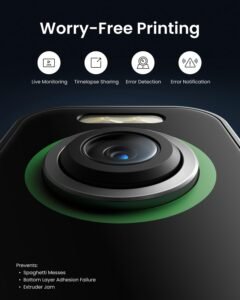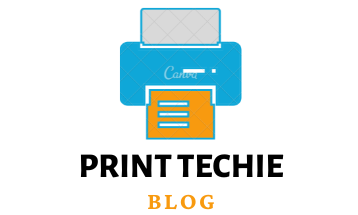In the vast realm of manufacturing, two techniques often stand out due to their unique advantages and applications: 3D printing vs injection molding. At a glance, these might seem like two sides of the same coin, both aiming to shape and create products. Yet, when we zoom in, especially on aspects like strength, they can be worlds apart.
Whether you’re an entrepreneur trying to decide on the best method for your product or a curious soul passionate about modern manufacturing techniques, understanding the core strength of these processes is vital. After all, the strength of a product often translates to its reliability, durability, and trustworthiness in the eyes of end-users.
Comparing the Strength of 3D Printing vs Injection Molding
In the clash between 3D printing vs injection molding, the quest to determine superior strength often emerges. Both have their unique strengths and weaknesses, shaped by their processes, materials, and applications. Let’s delve into a comparative analysis.
Directional Strength Variances:
- 3D Printing: Due to its layer-by-layer additive process, 3D printed parts can sometimes exhibit anisotropic strength, meaning their strength varies based on the direction. The interlayer adhesion is often a point of vulnerability, making parts more susceptible to forces acting perpendicular to the layers.
- Injection Molding: Given its high-pressure mold-filling process, injection-molded parts generally have isotropic strength – consistent in all directions. The absence of layers eliminates potential weak points, resulting in a more uniformly strong product.
Material Versatility and Implications:
- 3D Printing: The realm of additive materials is continually expanding. From traditional thermoplastics like PLA and ABS to more advanced materials like composite filaments infused with carbon fiber or metal particles, the choice of material can significantly impact the strength.
- Injection Molding: Dominated by well-researched and standardized materials such as Polyethylene, PVC, and Polystyrene, the strength attributes of injection-molded parts are often predictable. Advanced formulations, including reinforced plastics with glass or carbon fibers, offer enhanced strength and rigidity.
Production Volumes and Consistency:
- 3D Printing: Suited for low-volume production and prototyping, there might be slight variations in strength between individual prints due to factors like nozzle conditions, extrusion consistency, and environmental factors.
- Injection Molding: Perfect for mass production, this method offers consistent strength attributes across large batches due to the standardized process, consistent material flow, and controlled mold temperatures.
Design Complexities and Strength:
- 3D Printing: It allows for intricate designs, including internal lattices or honeycombs, which can enhance strength-to-weight ratios. However, overhanging parts without supports might display compromised strength.
- Injection Molding: While it can produce detailed parts, design complexities often require multiple mold parts or post-molding assembly, which can introduce weak points or joint vulnerabilities.
In conclusion, while both 3D printing vs injection molding have their strengths and limitations concerning product strength, the choice between them largely depends on the application, volume, design intricacies, and desired material properties. By weighing these factors and understanding the underlying mechanics of each process, manufacturers can make informed decisions tailored to their specific needs.
Read: Causes and Solutions of Weak 3d prints
Advantages and Disadvantages in Terms of Strength
Every manufacturing technique, whether it’s 3D printing or injection molding, has its set of advantages and drawbacks, particularly when we evaluate them concerning strength.

3D Printing:
Advantages:
- Customizability: 3D printing’s additive process allows for the creation of parts with internal geometries and lattice structures that can optimize strength-to-weight ratios, something hard to achieve with traditional manufacturing.
- Material Diversification: With a burgeoning list of specialized filaments, there’s the possibility to print with composite materials infused with elements like carbon fiber, offering enhanced strength.
- On-the-Fly Adjustments: Tweaking designs to address strength concerns is more straightforward, allowing manufacturers to rapidly prototype and iterate to optimize product resilience.
Disadvantages:
- Anisotropic Properties: Due to its layer-by-layer build, there’s often a disparity in strength between the layers (along the Z-axis) compared to across them.
- Post-Processing Needs: Many 3D printed parts require additional post-processing treatments, like UV curing or heat treatment, to achieve maximum strength.
- Limitations with Large Volumes: Consistent strength might be challenging to maintain across extensive production runs, given machine calibrations and environmental variables.
Injection Molding:
Advantages:
- Consistent Strength: Thanks to the high-pressure mold filling process, injection-molded parts typically exhibit uniform, isotropic strength across large batches.
- Tried-and-Tested Materials: Utilizing well-researched materials, such as reinforced plastics, ensures predictable and reliable strength outcomes.
- Seamless Finish: The absence of visible layers, often seen in 3D printing, means fewer weak points or potential areas for delamination.
Disadvantages:
- High Initial Costs: Mold creation requires significant upfront investment, making it less viable for short runs or products where strength requirements might evolve.
- Design Rigidity: Once a mold is made, adjusting the design for strength optimization can be costly and time-consuming.
- Material Limitations: Unlike 3D printing, which continually innovates with new filament types, injection molding is often limited to established, traditional materials, potentially restricting advancements in strength attributes.
Read: Comparing 3d Print Mirror Vs. Glass
Practical Applications and Strength Requirements
Both 3D printing vs injection molding serve diverse sectors, catering to unique requirements. However, the key lies in understanding which technique excels in strength and durability in various practical applications.
Aerospace & Defense:
- 3D Printing: Used to produce lightweight components and intricate geometries that can withstand the high stresses of flight. The ability to use high-performance polymers and metal blends ensures components meet stringent strength criteria.
- Injection Molding: Often used for bulk production of standardized parts, ensuring consistent strength and quality in components like fasteners and housing units.
Medical Industry:
- 3D Printing: Custom implants, surgical tools, and prosthetics are printed to fit individual patient needs, using biocompatible materials that must be strong enough to withstand bodily stresses.
- Injection Molding: Widely used in producing durable medical equipment parts, casings, and disposable items with consistent strength attributes.
Automotive Sector:
- 3D Printing: Enables the creation of custom car components, from interior parts to engine components, that can be optimized for strength and weight. The use of composite filaments ensures parts withstand automotive stresses.
- Injection Molding: It remains the backbone for mass-producing consistent and durable parts, from dashboards to bumpers, ensuring they can endure the rigors of road use.
Consumer Electronics:
- 3D Printing: Utilized for crafting prototype designs and unique gadget casings. Materials are chosen based on the device’s strength needs, from flexible wearables to rigid handhelds.
- Injection Molding: A staple for producing high volumes of consistent electronic casings, buttons, and internal components, ensuring each piece meets the device’s strength specifications.
Construction & Infrastructure:
- 3D Printing: Emerging in creating architectural models, fixtures, and even full-scale building components, the materials must endure environmental stresses.
- Injection Molding: Producing bulk items like pipes, fittings, and fixtures that require consistent strength to handle the stresses of built environments.
In the end, the application’s specific strength requirements, scale, and customization needs dictate whether 3D printing or injection molding is the optimal choice. While both have their strong suits, understanding their practical applications can guide industries in making informed decisions.
Read: How To Remove Stringing From 3d Prints
Conclusion:
In the showdown between 3D printing vs injection molding, both techniques present distinct strengths and challenges, particularly in terms of product robustness. While 3D printing shines with its adaptability, innovative materials, and intricate designs, it grapples with consistency across large production runs. Conversely, injection molding boasts reliable strength in mass production but offers less flexibility in design changes.
Ultimately, the choice between them hinges on specific needs, from design intricacies to production volumes. As technology progresses, it’s exciting to envision how these methods might evolve, further blurring the lines between their respective strengths and limitations in manufacturing’s dynamic landscape.

